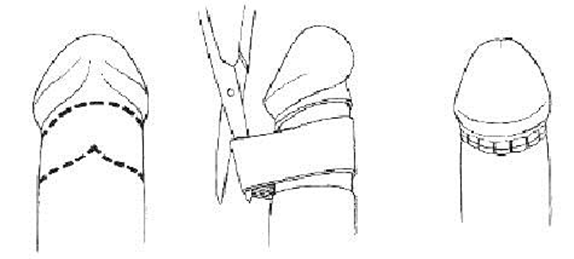Older Boys Circumcision by an Experienced Surgeon
Dr (Mr) Anwar Khan has performed more than 25 thousand circumcision procedures on infants, young boys and adults in the UK. He is a very experienced surgeon with brilliant results for revision and redo circumcisions.
Dr (Mr) Anwar Khan is skilled in methods of circumcision such as Cirumplast, Plastibell, sleeve, free hand, forceps guided method, stitches, dorsal slit, revision, redo circumcision, and frenuloplasty (helps to release/division of a short tight frenulum which makes the head of the penis to lean down during erections. This is also known as Frenulum breve. Circumcision helps in treatment of tight foreskin (Phimosis).
CIRCUMCISION METHOD
Male circumcision is one of the oldest and safest procedures.
It is defined simply as the surgical removal of a fold of skin (the `foreskin’ or `prepuce’) that covers the head (glans) of the un-erect penis.
The procedure is pain free because it is carried out under local anaesthesia. Local anaesthetic cream (EMLA or LMX4) is applied before the local anaesthetic injection is injected into the base of the penis.
SLEEVE RESECTION METHOD
It is quite a common method of circumcision and only takes around half an hour to perform. It is appropriate for infants, young boys and adults, though it is more suitable for young boys and adults.
It is quite a common method of circumcision and only takes around half an hour to perform. It is appropriate for infants, young boys and adults, though it is more suitable for young boys and adults.

This involves incisions made with a scalpel in both the outer and mucosal surfaces of the foreskin. First the foreskin is slid back along the shaft and a freehand cut is made around the shaft as far back as the scar line is to be placed. The foreskin is then returned to cover the glans and another cut is made around the shaft at the same position along its length as the first. A longitudinal cut is made between the two circumferential cuts and the strip of skin is removed. Any bleeding during the procedure is stopped with the use of Bipolar Diathermy (electrocautery). The two edges are then pulled together and fine absorbable sutures on an atraumatic cosmetic surgery needle are applied. At the end of the procedure the wound is first covered with Gelonet (a gauze lubricated generously with petroleum jelly) and finally by a clean gauze on top.
The recognised but rare risks of the procedure are: bleeding (rare), infection, and residual excess skin remaining.
CIRCUMCISION POSTOPERATIVE CARE
Circumcision is a minor surgical procedure that requires little postoperative
in the first few days to prevent any problems.
Bleeding is a recognised complication – though extremely rare in this age group, it is possible following the procedure. Significant bleeding may require a review. You will be asked to stay for at least half an hour after the procedure after which the boy will be checked again for any active bleeding before you will be allowed to set for home.
The stitches will fall off within 7-14 days and there is no special care that needs to be taken regarding that. Care should be taken when the bandage is being taken off. If it is tightly adhered with the skin then it should be soaked with some clean lukewarm water until it becomes soft and peels off easily. If it is pulled off roughly then it can tear the stitches which can cause opening and disruption of the wound line.
The local anaesthesia wears off in few hours. You will be advised to give pain control medication for a few days. This will keep your son pain free.
A detailed written advice sheet will be provided after the procedure.